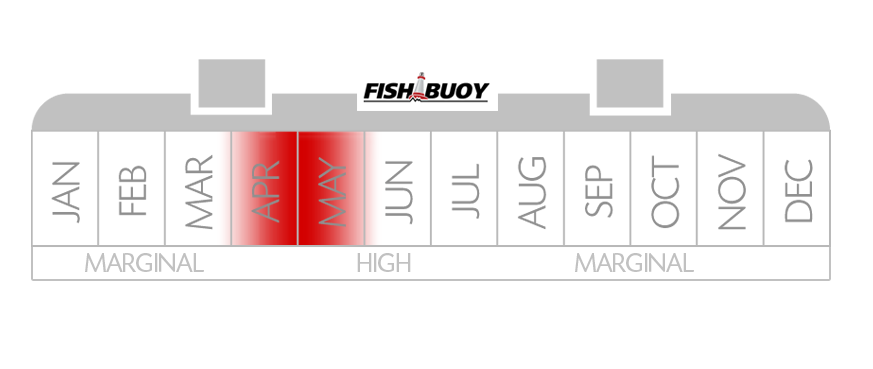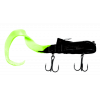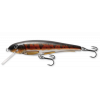MUSKELLUNGE

IDENTIFICATION
| |
Greenish, brownish or yellowish sides covered with barred, spots, or may have no markings at all |
| |
Single dorsal fin located on the posterior portion of the body |
| |
Long, sleek, predatory fish with a broad, flat mouth, often with six to nine pores under the jaw |
How to identify a Muskellunge
The pelvic (ventral) fins are located relatively far back on the belly, about half way between the pectoral fins and the tail, instead of directly under the pectoral fins. The mouth is large with the maxillae reaching back at least to the middle of the eyes, and broad, like a ducks bill, but full of teeth.It can be distinguished from the pike and the pickerels by several factors. It may be barred, spotted, or have no markings at all, but any markings that do occur will be darker then the background of the body. The northern pike, by comparison, has light-colored, oblong spots against a darker body, and the chain pickerel has a unique chain-like pattern on the sides. The redfin and grass pickerels look much more like the musky in their markings, but they only grow to about 15 in. (38 cm) long. Another distinction occurs in the number of pores under the lower jaw. In the musky there are 6-9 along each side (rarely 5 or 10 on the side only).
SPAWNING TEMPERATURES

SPAWNING MONTHS

TARGET AREAS
|
|
Where to catch Muskellunge
It is endemic to the northeastern United States, throughout the area of the Great Lakes south to Georgia, and north to Quebec (St. Lawrence Seaway) and Ontario in Canada. It has been introduced into Manitoba west of Lake Winnipeg. It rarely ventures far from cover, and prefers shallow, heavily vegetated waters less than 40 ft. (12 m) deep, usually along rocky shorelines in slow moving streams and larger rivers.




